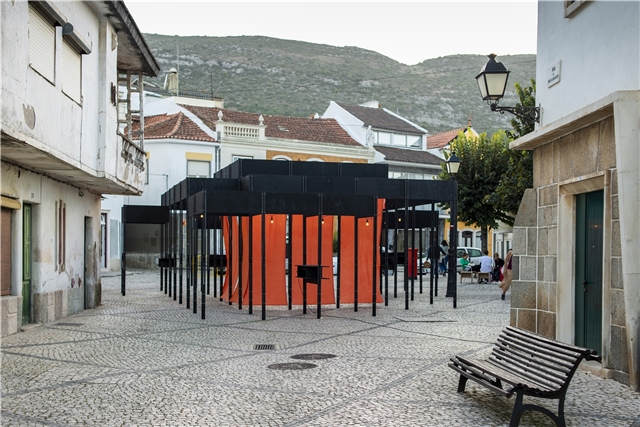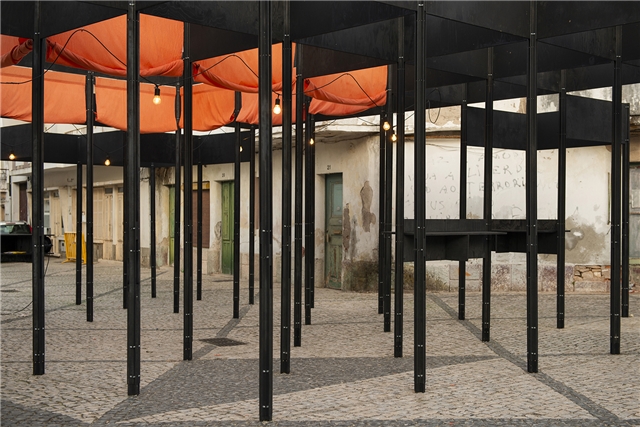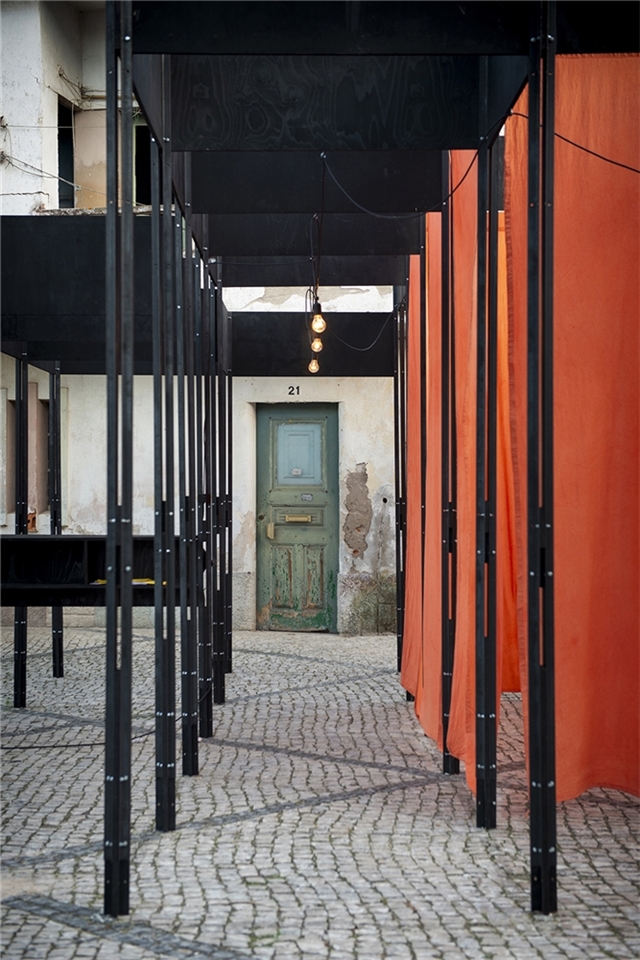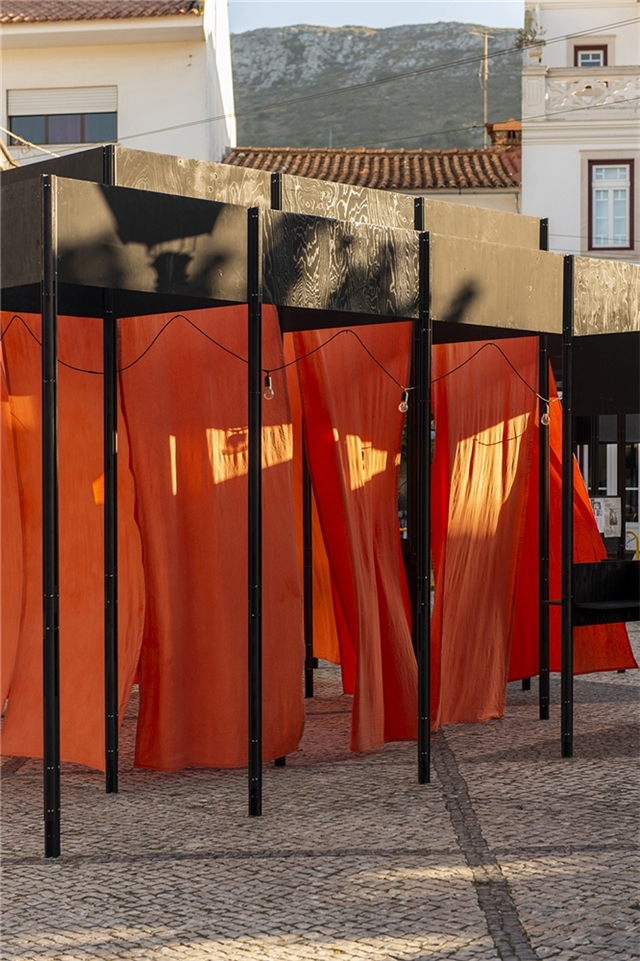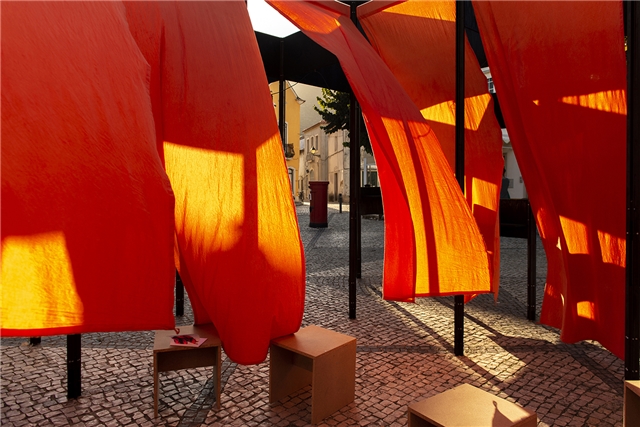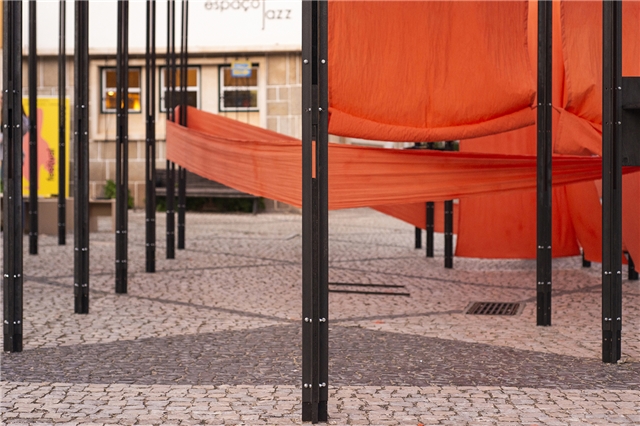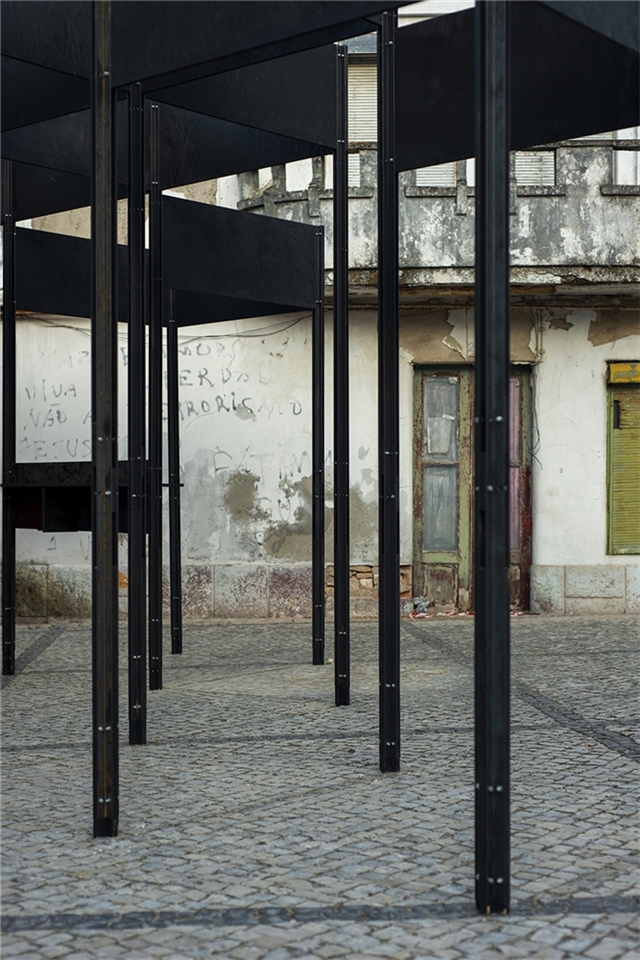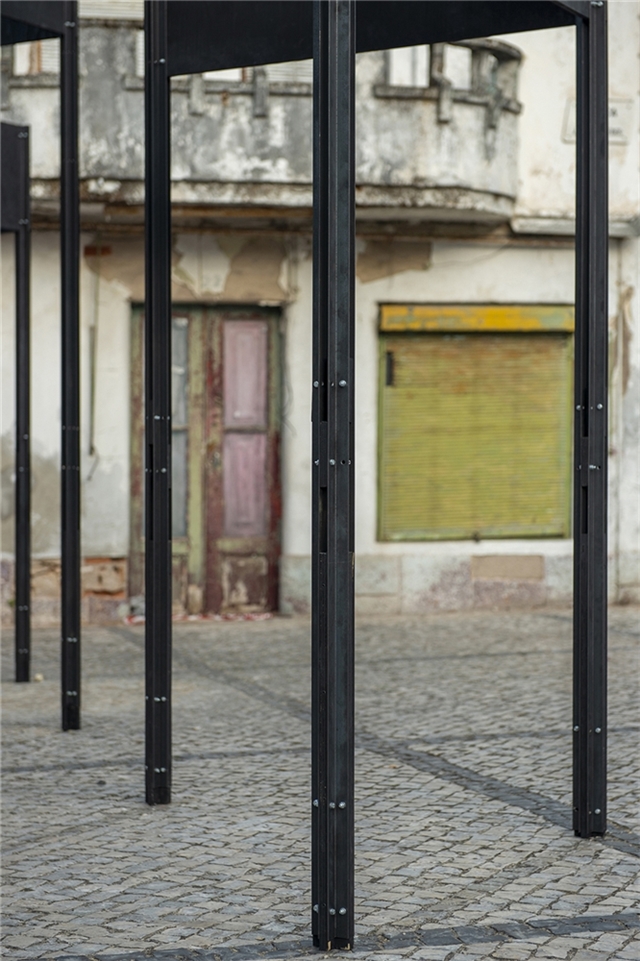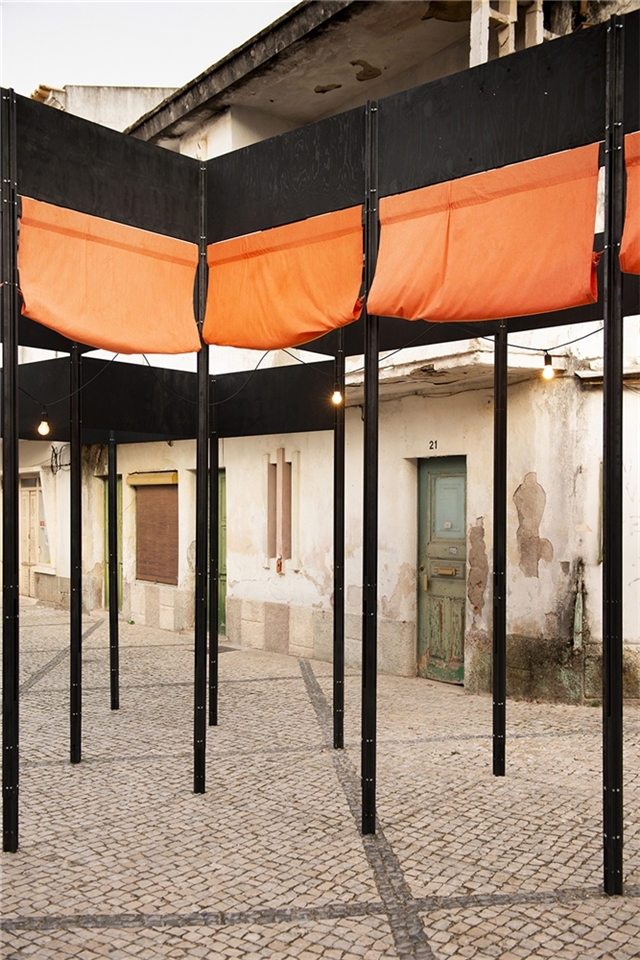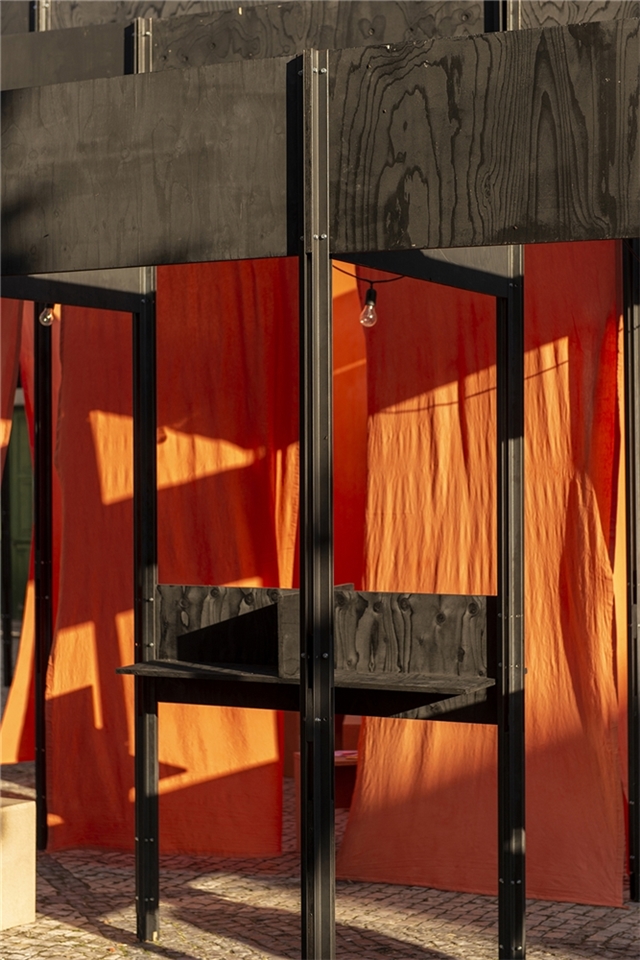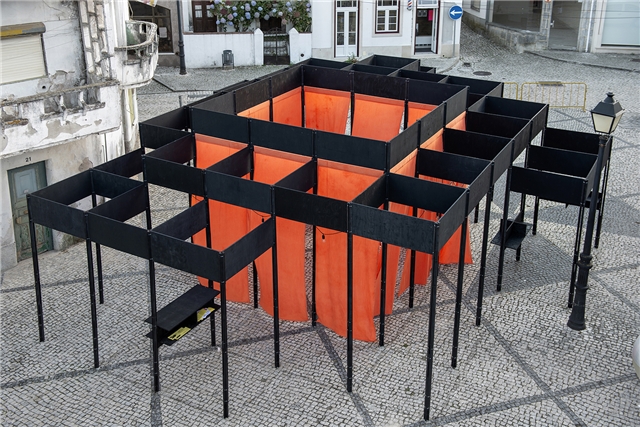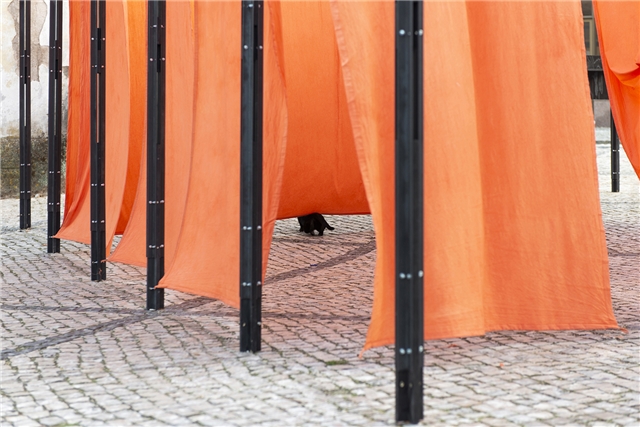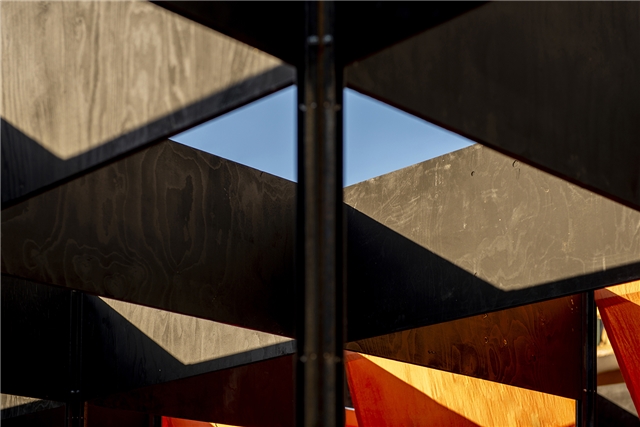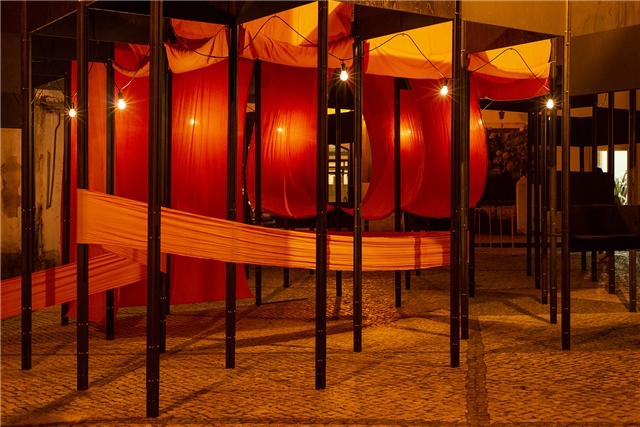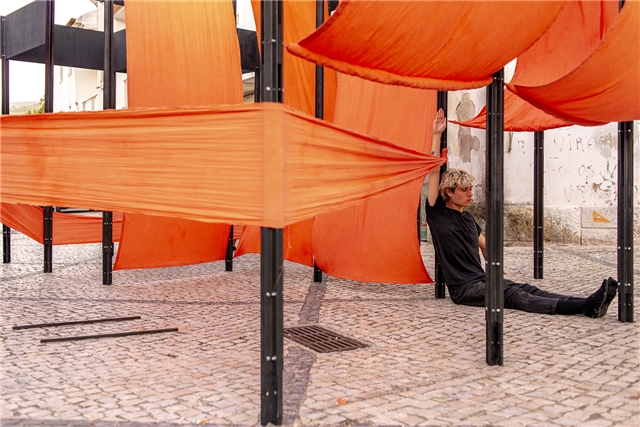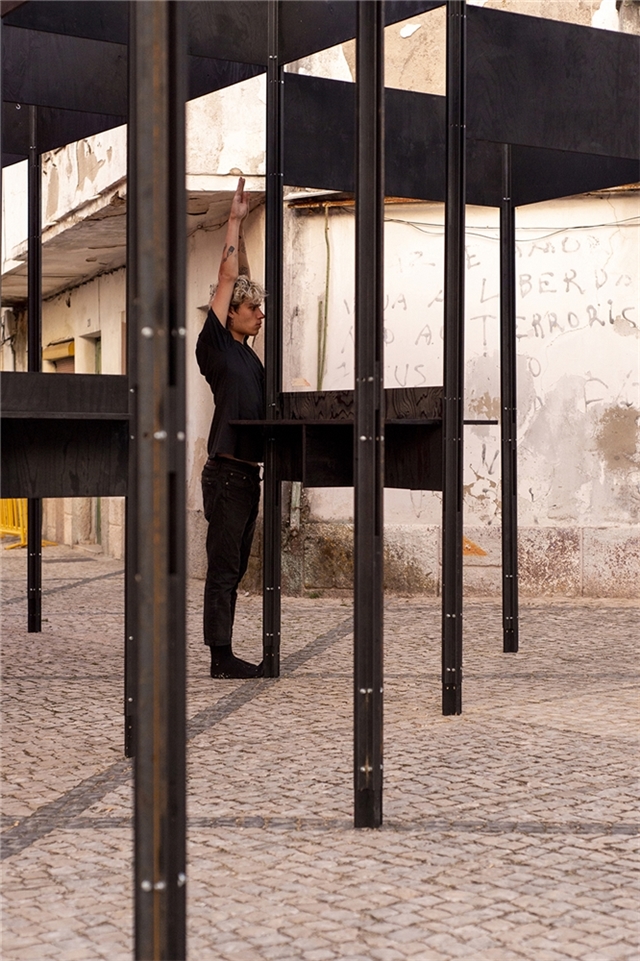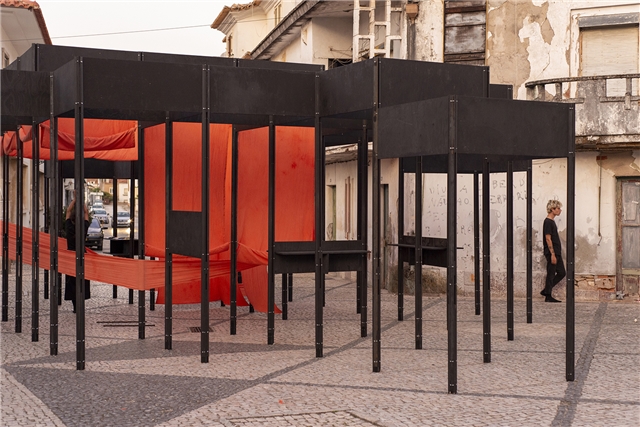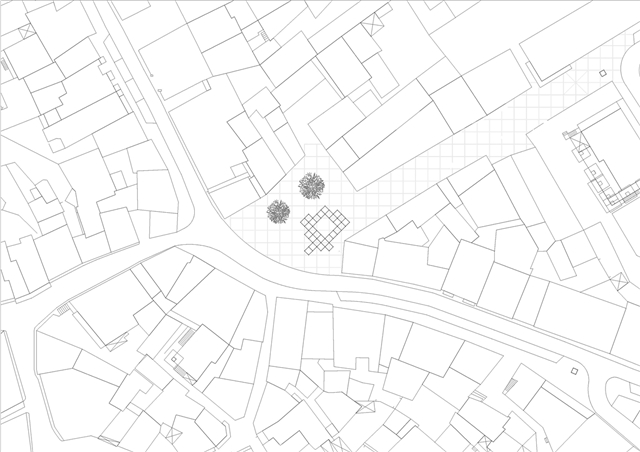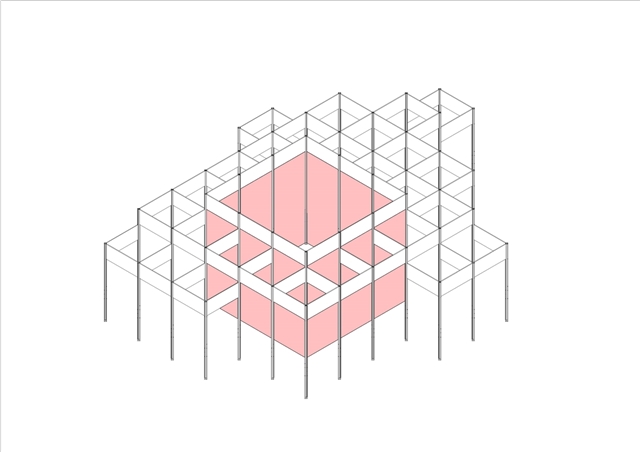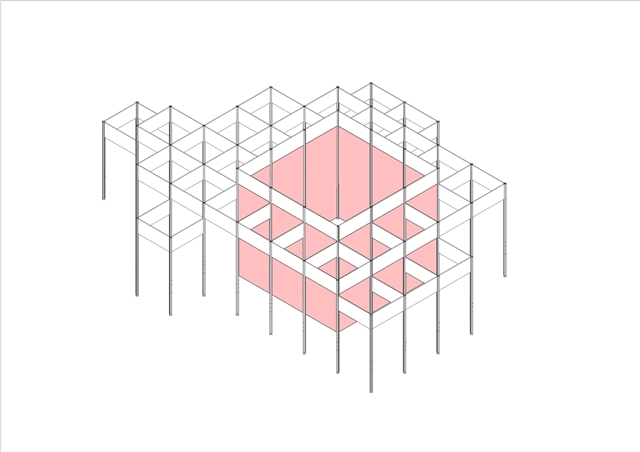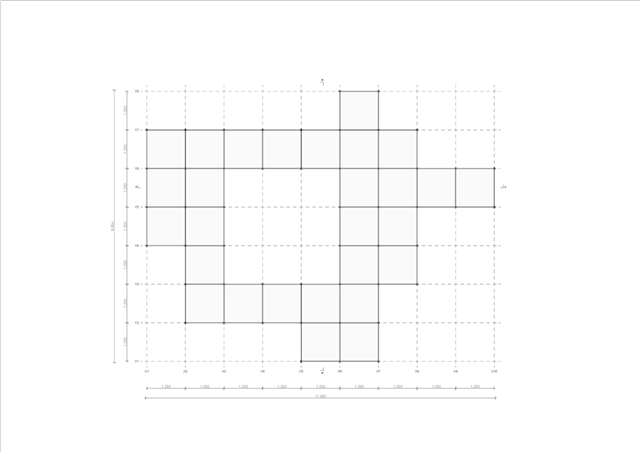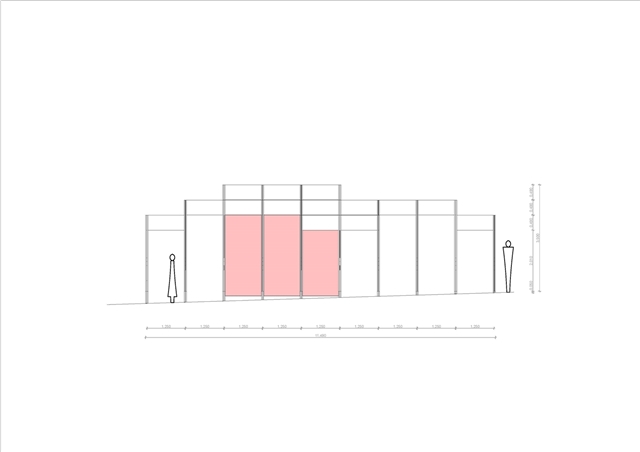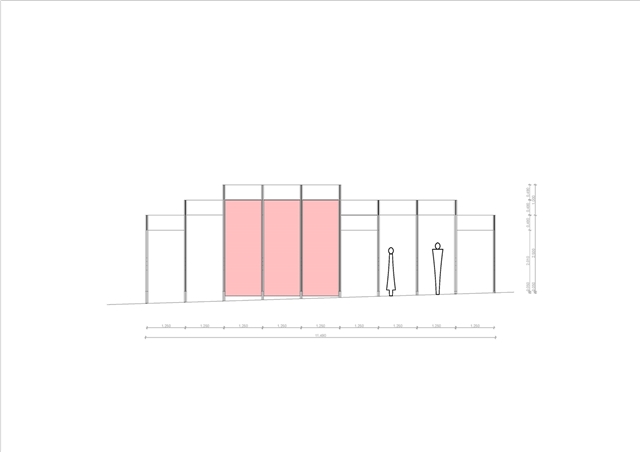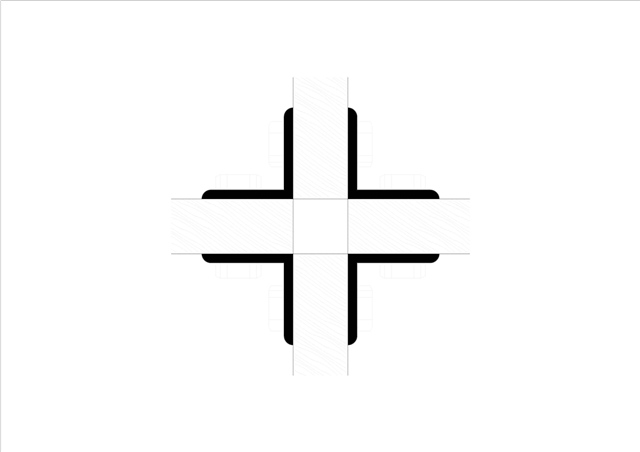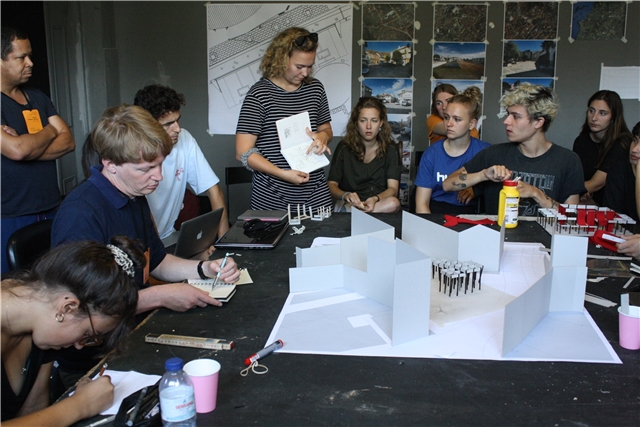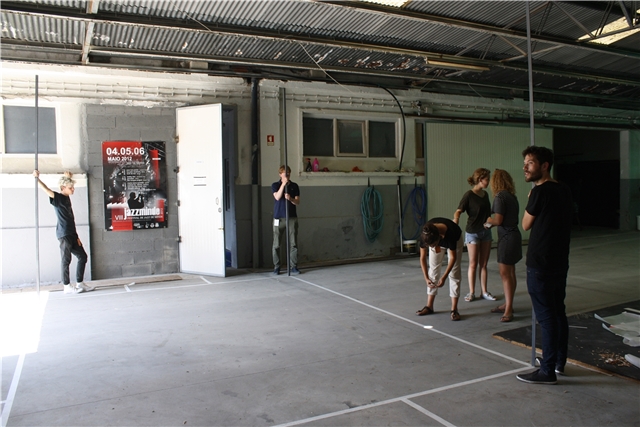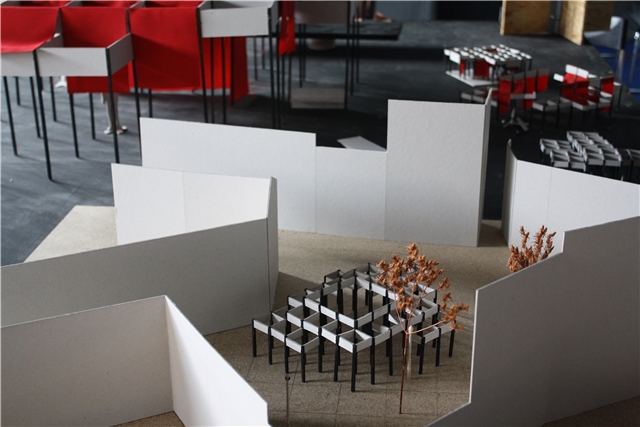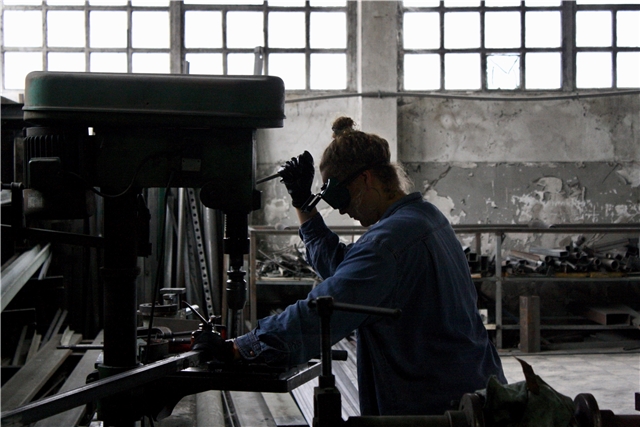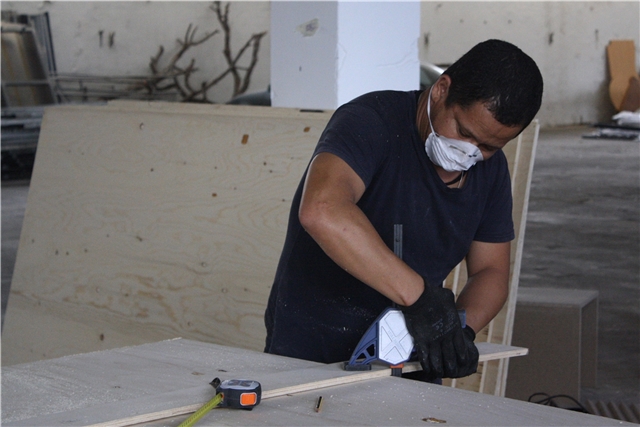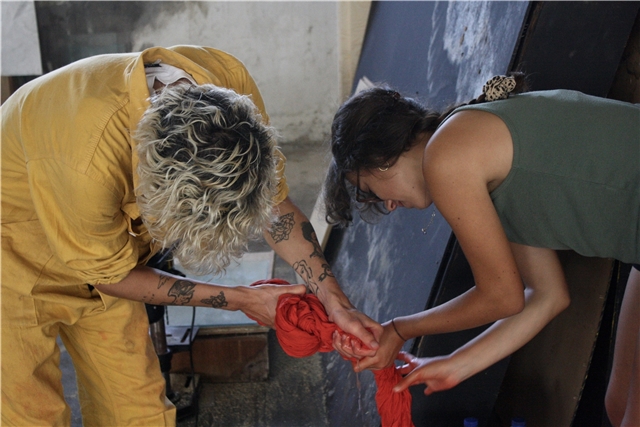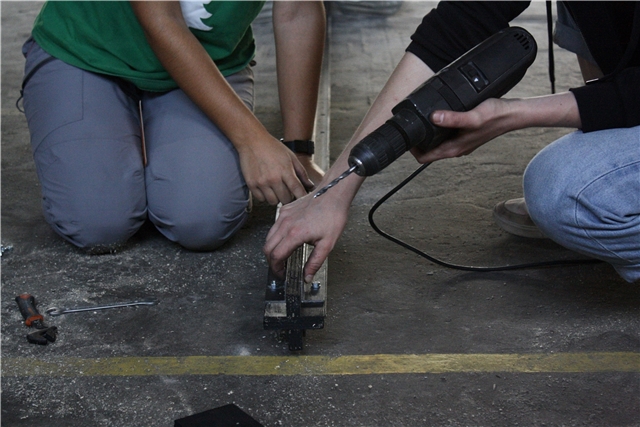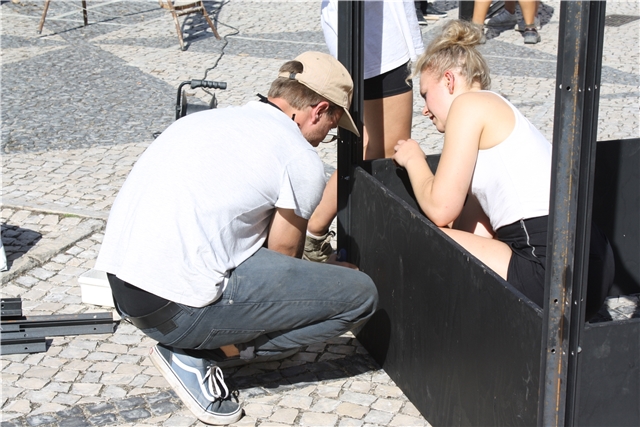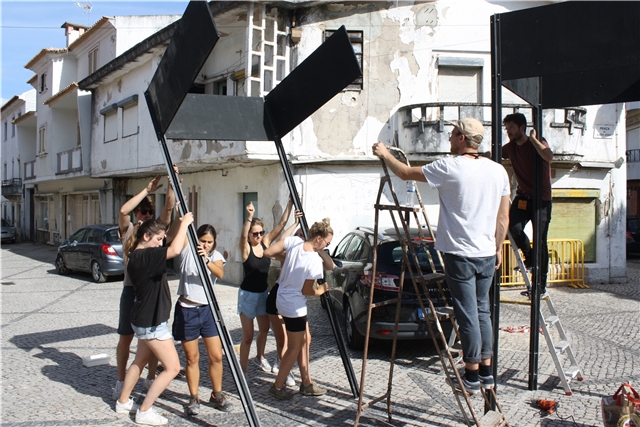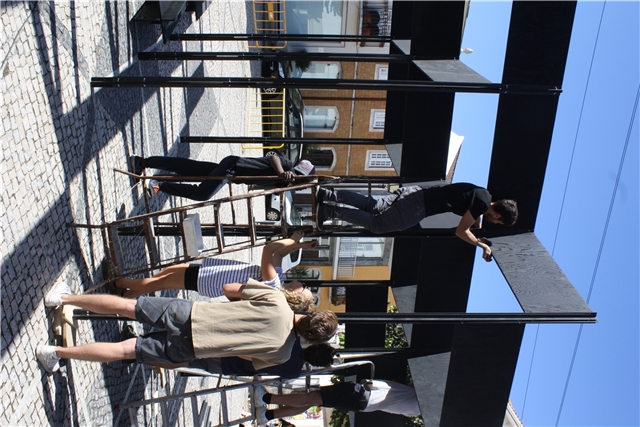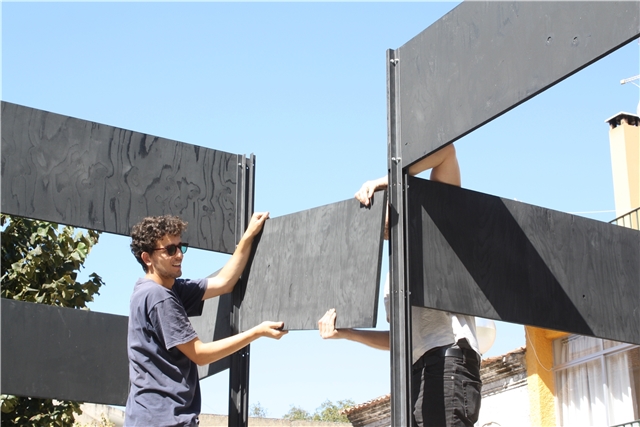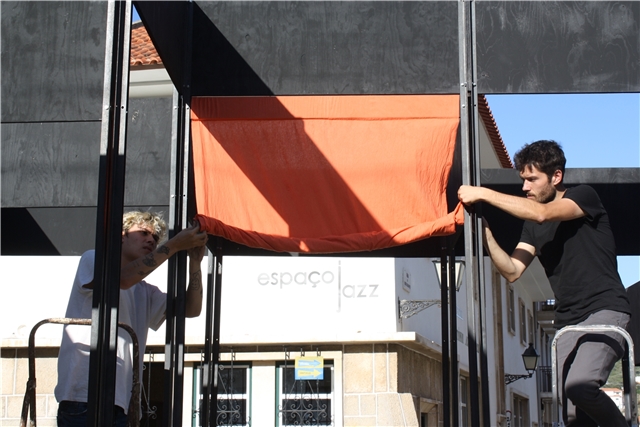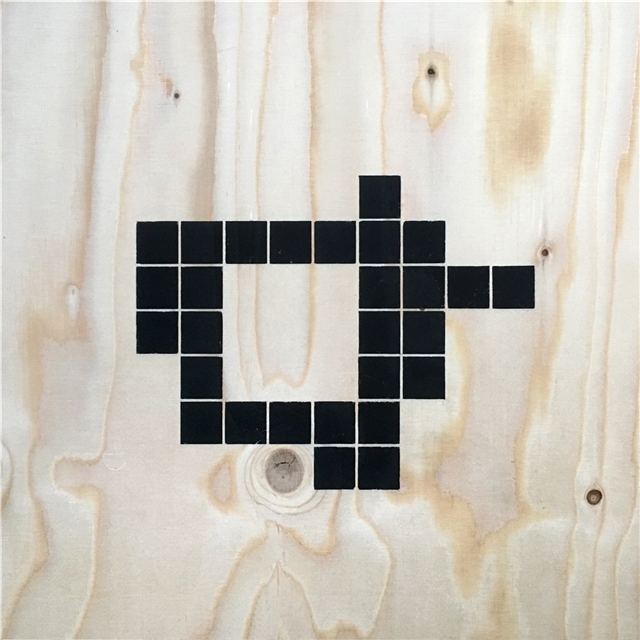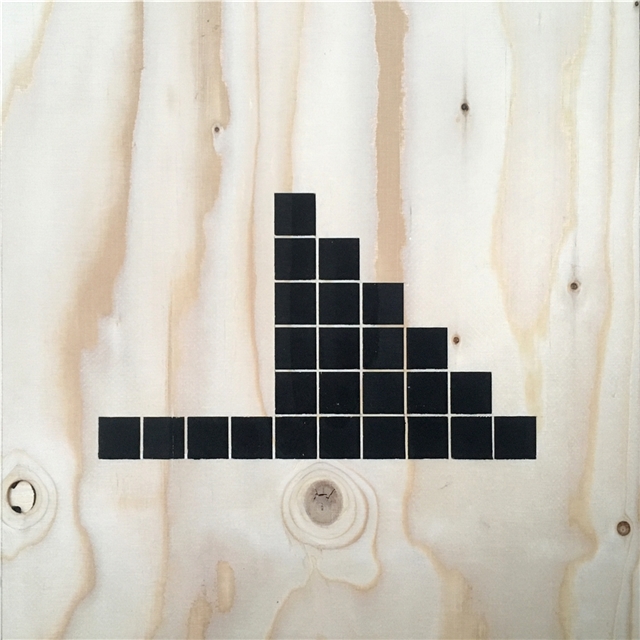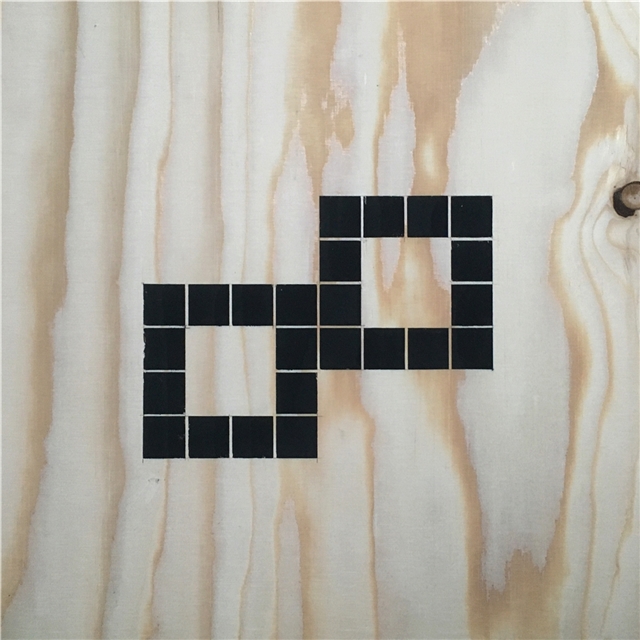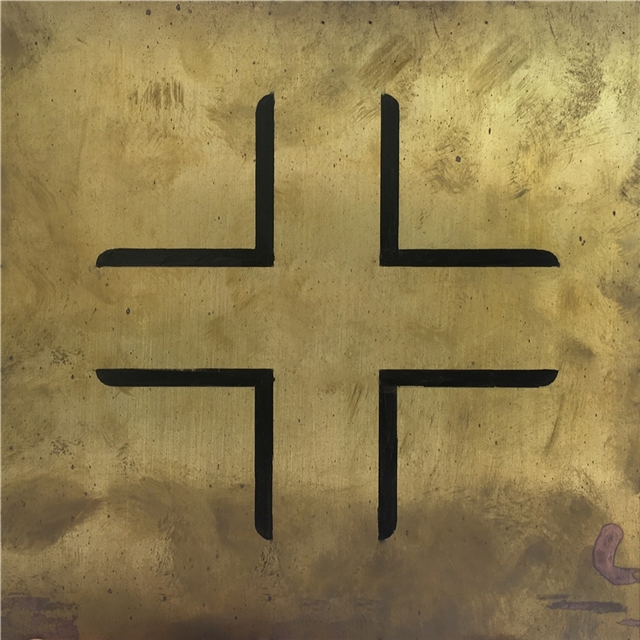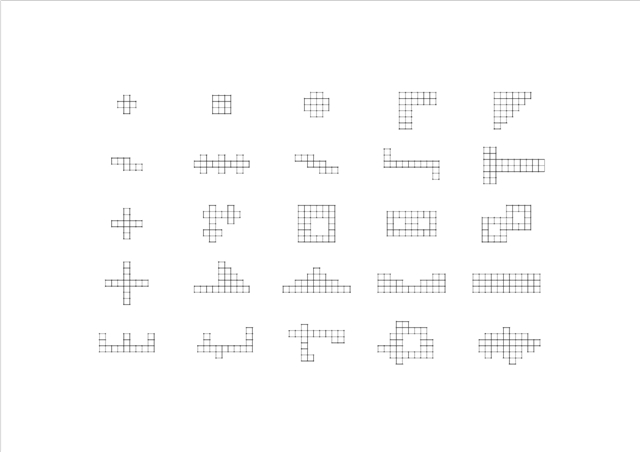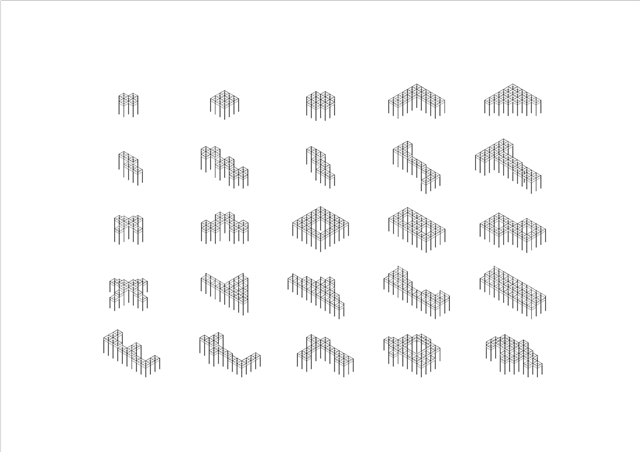The project is the result of a laboratory of Architecture organized by Universidade Autónoma de Lisboa (UAL). It's an intensive workshop of two weeks where the first part is dedicated to the analysis of the territory and development of an architectural solution for a given programme, and the second week is dedicated to its construction. The aim of these laboratories of Architecture is to bring academic education closer to built reality and also to reduce the distance between architects, clients and users through a collaborative process. For this edition of INSITU there was a partnership with the HafenCity Universität Hamburg (HCU) initiated that allowed the possibility to include German students. Thus, the working group was quite heterogeneous and brought together foreign and Portuguese architecture students as well as young people from the Faculty of Fine Arts of Lisbon or recent graduates in architecture and design.
The challenge was proposed by the festival of performing arts Materiais Diversos, with the aim of conceiving and building the new 'meeting point' for the festival, a structure that should look like a symbolic piece in the urban context of Minde and should also work as place to sell tickets, books and to host conversations, debates and film screenings as part of the event's programme. One of the essential requirements was that the elements of the structure could be easily dismantled and transported, as the festival intended to use it elsewhere and later offer the project to the local community for its future reuse.
Throughout the two weeks of the project, the work was structured in four phases:
1) Analysis: there was a walk that started in the centre of Minde and extended to the surrounding areas with the aim of acquiring a more in-depth knowledge of the site. This experience was complemented by a series of lectures held by locals through which it was possible to get to know the historical and geographical context in which the work would take place.
2) Design and Project: a basic and systematic structural system was presented with the use of the available materials on which the work would be carried out. The students were divided into 3 small groups in order to explore different approaches for further discussion and analysis. Small scale models were created for the study of the urban relations and larger scale models were built too in order to study the constructive system and the spatial result. At the same time, the group produced the first real scale tests of the constructive detail with the aim to understand the constraints of the execution works. After two working days the different solutions were presented. The advantages and disadvantages of each approach were discussed and the proposal that seemed to be the most appropriate for the context was chosen, incorporating, however, some aspects of the other solutions. The first full-scale prototype of a fragment of the project was developed and, as a conclusion to this phase, students officially presented their results to the external monitoring committee. Those results introduced new issues for reflection in the following steps: It became clear that the solution would be to use steel pillars, which would deal with vertical structural pressure, a set of painted plywood plates, which would serve as the horizontal bracing of the structure, and some textile elements that would create the marking of a central area, an open-air stage for the festival.
3) Work Planning: after the decision of the project that will be implemented, the group started to work together again to further develop the final structure integrating some of the aspects discussed in the previous phase so that the precise planning of the execution could be initiated. The execution project with detailed drawings and maps of quantities was prepared. The prototype was also an object of constant try-outs during these days for material tests and final decision making, both at the constructive and spatial level, as well as during the search for the appropriate tones of wood and fabrics.
4) Construction: In the following days the construction phase began. They firstly started with preparation works, such as the cutting and painting of wood or the drilling of iron profiles followed by the installation of the project at Alberto Guedes Square. An inauguration was made at the start of the assemblies and the whole construction process of the following days was assumed as a performance within the context of the festival itself. The assemblies took place as planned and, at the end, the students of the Faculty of Fine Arts were challenged to create a performance piece closely related to the architectural space, exploring the rhythms, sounds, materials and spatial qualities that resulted from this process.
The developed project is simultaneously a generic and a specific solution, since on one hand it is a self-referential piece that uses the disciplinary language of architecture and, on the other hand, it establishes very evident relationships with the context where it was set up: the creation of a central space opens up the possibility of a new open stage for the festival Materiais Diversos; the multiplication of pillars generates a very strong relationship with the forest of the surrounding territory; the dark colouring of the woods refers to the marks that the 'sea of Minde' leave on the submerged trees, the different heights of the structure, which rises in the centre, establishes a dialogue with the accentuated topography of the mountains surrounding and enclosing this place; and, finally, the fabrics were dyed by hand as a reference to the textile industry, once it was the region’s most important source of income (which nowadays almost disappeared). The project, therefore, also resonates with the history of the industrial warehouse where the workshop took place because it was precisely there that the whole process of dyeing the fabrics was done in the past.
The laboratory confirmed that the methodological and intensive integration of certain aspects such as the analysis, design, construction and spatial experience are capable of producing a form of practical knowledge that comes rather close to a conventional architectural process within a short period of time. The structure corresponded to the challenge launched by the organization. Finally, a building manual of the project was developed, which demonstrated the final result of the project in Minde but also the different possibilities the structural system allows, for future uses.
Client Festival Materiais Diversos
Project Team Annina Schreiber, Catarina Dias, Catarina Monteiro, Diana Margarida, Flora Del Debbio, Franz Kirsch, Gonçalo Fialho, Hannah Grapentin, João Quintela, Johanna Hirte, Jule Franssen, Lenildo Malenga, Miguel Condeça, Matthias Ballestrem, Nike Strutz, Ricardo Ramalho, Rosa Arma, Tim Simon, Ulrike Kuhlmann, Vladimir Ngala
Engineering Daniel Maio
Organization CEACT/UAL: Filipa Ramalhete, José Castro Caldas, Sérgio Silva + A+EE/HCU
Photography João Barata
Partnership JJ Louro (wood); Construções Abílio & Serras Lda (steel); Luís Carlos Mora Salgueiro - Serralharia Civil (steel); Alfredo Parreira Serralharia.



